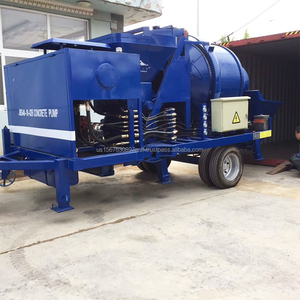(208 products available)







































































































































































 Ready to Ship
Ready to Ship























 Ready to Ship
Ready to Ship

















 Ready to Ship
Ready to Ship











The primary function of a dough mixer, also known as a dough mixing machine, is to mix various components of the dough. However, depending on the design and operational methods, different types of dough mixers are available for business buyers to select from.
The specifications of a dough mixer will differ based on various types and models:
The dough mixer is used in bakeries, pasta factories, restaurants and pizzerias. It is used to prepare a large quantity of pizza dough and dough for various other bakery products.
In bakery production lines, the mixer can be the first step before the kneading stage in more extensive production facilities. The mixing stage can be combined with other mixing stages in some more complex machines. Industrial bakeries require high-capacity mixers.
High-capacity mixers with scrapers are also beneficial in large-scale food-service establishments that make high-quality products. In food service establishments, the mixer is an integral part of any pizza restaurant looking to streamline its pizza dough preparation process. The mixer ensures consistent results, saving time and labor. Its efficiency enables pizza restaurants to produce large quantities of dough quickly and efficiently, meeting the high demand for pizza. Consider using a dough mixer if you're a pizza restaurant owner looking for a valuable addition to your kitchen equipment.
In addition to pizzerias, dough mixers are also helpful in other food production establishments, such as schools, hospitals, catering companies, and buf-fets. These kitchens often have high demands for baked goods, including bread, pastries, and pizza. Invest-ing in a dough mixer can increase efficiency and improve the quality of homemade products in these large-scale catering operations.
Here are some other unique applications for a dough mixer pizza:
When choosing a suitable dough mixer machine for resale, several factors should be considered to ensure it matches target customers' needs and preferences. Besides, they are essential for deciding whether to buy small or large quantities of the product at an affordable price.
Customer requirements analysis
It is important to assess the customer base and their specific needs and applications. Consider the type of customers who will be using the mixer, such as commercial bakeries, restaurants, catering businesses, or artisanal bakers. Distinguish between customers needing large-capacity mixers and those requiring smaller, more compact ones. Moreover, the preferred mixing methods (manual or automatic) and the types of dough customers commonly work with should be considered, too. Customers' available space restrictions in their kitchens or production facilities could also affect the preferred mixer size and design.
Product features comparison
Several key features of the dough mixer machine should be compared since they greatly affect performance and convenience. The mixing capacity of the machines should be compared to see which offers more suitable volumes for specific customer bases. Different dough mixers have varying mixing speeds for different mixing techniques. The mixing methods available also vary from machine to machine, with some mixers being able to cope with different types of dough. All machines have different attachments and accessories that come with them, which can be more or less useful depending on the customer's needs. Considerability to rearrange attachments or even lend the mixer to other industries is another advantage that businesses find very helpful. The material used in manufacturing the product usually impacts its lifespan and performance. Machines more exposed to heat and friction are usually made from stainless steel. Knowledge of the material will help institutions decide on particular mixers.
Supplier analysis
Considering the supplier of the product, the factors they offer when purchasing, and the terms and conditions of their services is paramount. Look for suppliers that offer warranty coverage for the products, as this will offer protection to institutions and customers. Competitive pricing is also essential when determining profit margins for resale. Good after-sales services like entire supply chains will offer more solutions and business opportunities to institutional buyers.
Q1: How does a dough mixer work?
A1: The working principle of a dough mixer is to mix flour and other materials through its rotating stirring rods. First, operators need to put raw materials into the mixing vat. Then, turn on the power switch, and the mixing vat will start to rotate. At the same time, the mixing blade will also begin to stir and mix the materials. Mixing time and speed can be adjusted as needed. After mixing, turn off the power switch to let the dough out.
Q2: What are the features of a commercial dough mixer?
A2: A commercial dough mixer usually has the following features. Strong power and capacity to meet the needs of large volumes of dough. Multiple mixing speeds and time settings for precise control of dough mixing. Stainless steel or other durable materials for long-term use and easy cleaning. Safety devices such as lid interlocks to ensure operator safety.
Q3: Can a dough mixer make batter?
A3: A mixer is commonly used to make dough and can also make batter. The mixer combines flour, water, and other ingredients into a thick, paste-like consistency. However, the thickness of the batter that the dough mixer can handle is limited. If the consistency is too thin, it is better to use a different mixer to avoid any damage.